Elgato WAVE: 3 Microphone Review
Elgato's new flagship microphone, the WAVE 3, may have just taken the crown for best streaming and content creation microphone aimed at beginners.

The Bottom Line
Introduction & Specification Details and Close-up
Project WAVE was teased by Elgato back at CES right at the start of the year, since then many have wondered if the capture card company was planning on releasing a microphone. Well, now they are here.
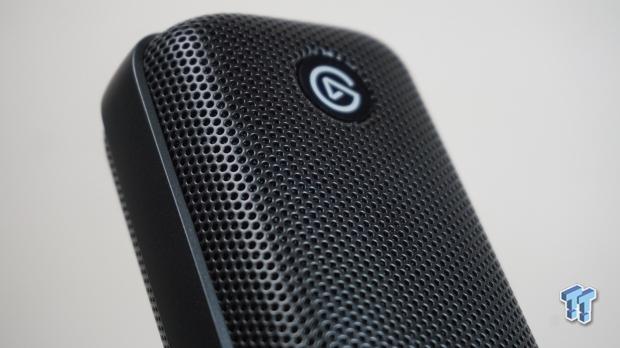
Introducing WAVE 1 and WAVE 3. Elgato has decided to enter the microphone market with two variants, WAVE 1 being the cheaper option, and WAVE 3 being the flagship model with all the bells and whistles. In this review, we will be taking a close look at WAVE 3 to see if the extra $30 is worth it over the WAVE 1. We will be breaking down all of the features of the WAVE 3, and taking a close look at what Elgato has packed into this moderately sized microphone.
WAVE 3 is a condenser microphone that sports full support for Elgato's insanely popular Stream Deck line up. This means that users who own a Stream Deck will be able to control all of the features on the WAVE 3 microphone right from their Stream Deck. It should also be noted that Elgato isn't shy when it comes to letting consumers know who these microphones are designed for, and if you guessed content creators and streamers, then you guessed right. WAVE 3 could very well be the microphone you start your streaming and content creation career with, and here's why.
Close-up

First off, we have an image of the front of the box, and from the front of the box, we can see Elgato has stuck with its classic blue packaging, as well as providing an image of the WAVE 3.

The side of the packaging lists off a bunch of the features that come with the WAVE 3.

The back of the box shows off a more in-depth look at the features as well as the WAVE Link software that comes with the microphone.

The final side of the packaging reveals the dimensions for the microphone, as well as its weight.
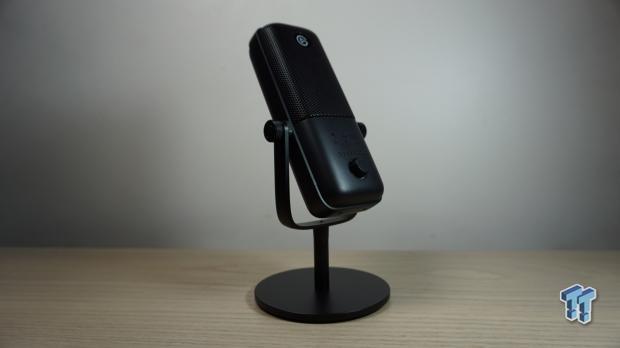
Above is an image of the WAVE 3 taken out of its packaging, and as you can see, Elgato has chosen to make the WAVE 3 completely black with only one spot of branding located at the top.
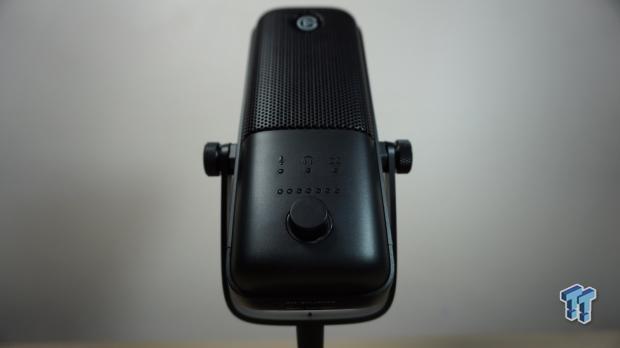
Here we have a front-on shot of the WAVE 3, and this is where we start to notice some differences between the WAVE 3 and the WAVE 1. I will get more into the differences later.
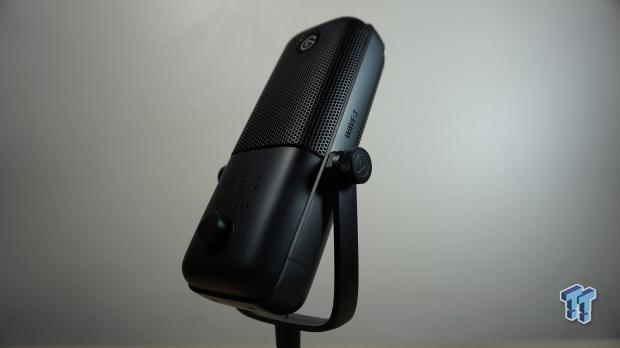
In this above image, we can see the really nice and subtle "WAVE 3" naming on the spine of the microphone, as well as the removable screws that are used to hold the microphone on the provided desktop bracket.
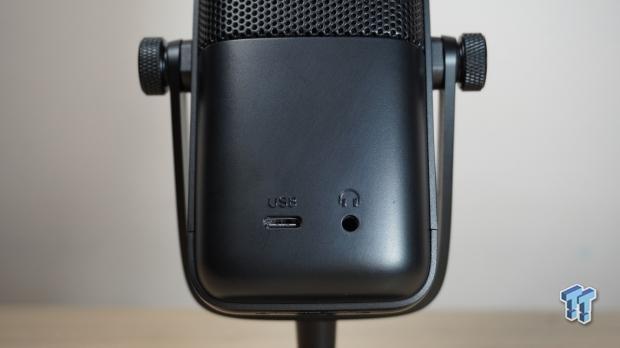
Moving onto the back of the WAVE 3, we can see it features the same two ports as the WAVE 1 - USB-C, and a 3.5mm headphone jack.
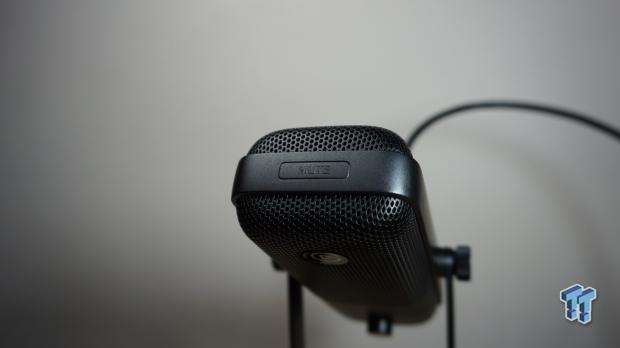
Lastly, we have an image of the very top of the microphone, and we can see it features a "mute" pad. This isn't a button, but instead, it responds to a simple touch, and upon touch, it mutes the microphone causing a red outer glow around the volume wheel.
Jak's Test System Specifications
- Motherboard: ASUS ROG Crosshair VIII Hero X570 (Wi-Fi) (buy from Amazon)
- CPU: AMD Ryzen 5 3600X @ 4.4GHz (buy from Amazon)
- GPU: EVGA GeForce RTX 2070 SUPER XC GAMING (buy from Amazon)
- Cooler: be quiet! Silent Wings 3
- RAM: 16GB (2x8GB) Corsair Vengeance LPX 16GB 3200MHz (buy from Amazon)
- SSD: GALAX HOF Pro SSD PCI-E M.2 2TB
- Power Supply: Corsair CX Series 750 Watt (buy from Amazon)
- Case: be quiet! Silent Base 600 (buy from Amazon)
- OS: Microsoft Windows 10 Pro 64-bit (buy from Amazon)

Design & Software
Design
As I mentioned in the WAVE 1 review, Elgato has decided to keep things simple design-wise, and the same goes for WAVE 3. There are only a few differences between the WAVE 1 design, and the WAVE 3 design, but those differences, I feel, go a long way after prolonged use of the product.
The differences between the WAVE 3 and WAVE 1 are that the WAVE 3 comes with a higher max sample rate, has a mute button on the top of the microphone, and mode controls for gain, mic/PC monitor crossfade, and headphone volume. While that doesn't sound like much of a difference, it's enough to hike the price up by $30 from $129.99 for the WAVE 1, to $159.99 for the WAVE 3. So are these features worth the extra cost?

Well, if you wanted to go off a pure convenience perspective, I would say yes, purely because the features you are getting versus the extra cost are certainly worth it. Elgato has put a lot of time into designing the WAVE 3, and with it being their flagship microphone, you would expect it to come with all the bells and whistles. Here's why the bells and whistles are worth the extra money.
Let's start off with the modes, the accessibility of each of them, and the design choices behind them. Elgato has placed a dial on the front of the microphone that allows users to turn to adjust levels in whatever mode they are in. The dial can also be pressed, which changes the microphone from being the 'microphone mode' to 'monitor volume' to 'Mic/PC'. When in microphone mode, the lower dots above the dial indicate what level of gain your microphone is set at.
This feature is great, as it allows users to change their gain levels on the fly without having to tab out of their game and change it in software. The mute microphone button that is located at the top of the microphone is also a super handy feature. The fact that there is no button means users can silently mute their microphone without teammates having to hear a clicky clacky button press.
The mode switching on the WAVE 3 is super easy, and also extremely helpful. I really like what Elgato has done in terms of simplicity, yet accessibility. The modes switching works on-the-fly with the WAVE Link software, so any adjusts made on the microphone itself will be immediately reflected in the WAVE Link application.

My only critique would be when adjusting the gain, for example, increasing and decreases via the microphone dial represents leaps of 7 to 8%. For example, placing the microphone on 0% gain, and then turning the dial to the first notch brings the gain level up to 8%. Changing the second gain to the second notch on the microphone adds another 7% to the gain, bringing the total gain level up to 15%. The fact that the gain can only be increased by these increments means that users can't precisely set their gain level without having to tab out. I would have much preferred the increments to be much smaller so it can be more precise.
The build quality of the WAVE 3 is really well done. The microphone has a nice weighted base, and is mostly constructed of metal. I believe that the WAVE 3 is a very sturdy microphone, and much like the WAVE 1, it has no parts of it that are susceptible to breakage. Fantastic work here, Elgato.
Software
The software that comes with the WAVE 3 is the WAVE Link software, and here's where Elgato has changed the game in terms of entry-level streaming microphones. The WAVE Link software is a digital mixer, which allows users to route audio through specific channels in the software. The closest thing to the WAVE Link software is a physical GoXLR/Mini, which basically does what the WAVE Link software does, but much better.
Here's a rundown on how the WAVE Link software works:

Above is the first screen users will see once they have downloaded and installed the WAVE Link software. What we are looking at here is a digital mixer, which is basically a hub for controlling audio inputs and outputs. WAVE Link works in tandem with the Windows Sound Settings, and allows for users to adjust the gain levels of the WAVE 1, adjust the headphone volume levels, change volume levels for channels, and more.
The WAVE Link software enables users to filter their sounds through specific channels. For example, if I was streaming and wanted to reduce the volume of music I was playing the background, I can simply run my music source through one of the provided channels and simply reduce the volume using the level inside the WAVE Link software. The same principle goes for game volume, voice chat, system sounds, sound effects, and more.
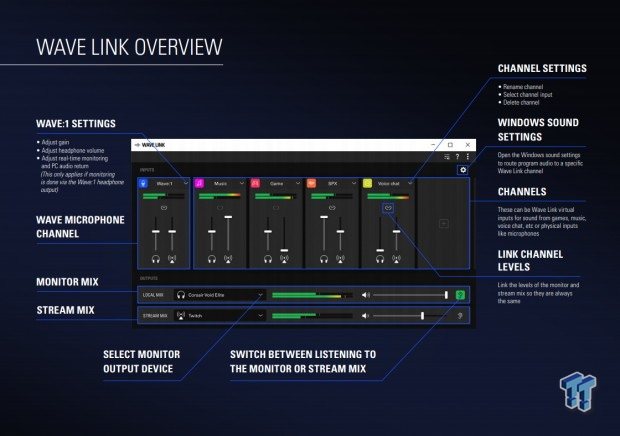
Users can also select what audio input they want to hear through their headphones/speakers. This can be simply done by selecting/deselecting the headphone icon in any of the channels. For example, if you wanted to have your stream viewers listen to music, but you didn't want to hear the music, you can simply mute that audio input from playing in your headphones, while still outputting the sound to your stream viewers. Again, the same principle applies to any of the programmed channels.
WAVE Link Setup
So, how do you setup your WAVE Link? Well, it's actually easier than you might realize.
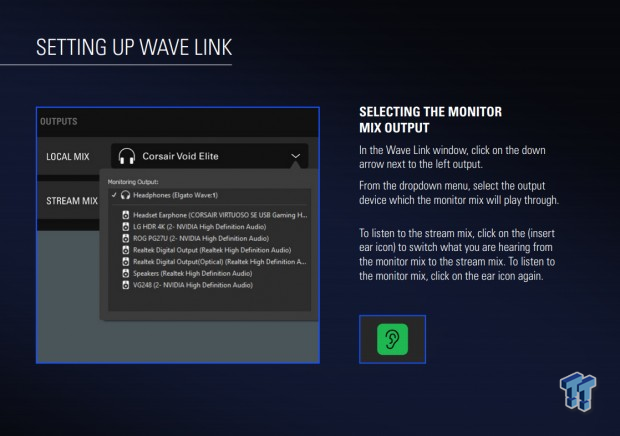
Above we have a slide from Elgato, and they explain how to get audio routing through WAVE Link and to output to your device.
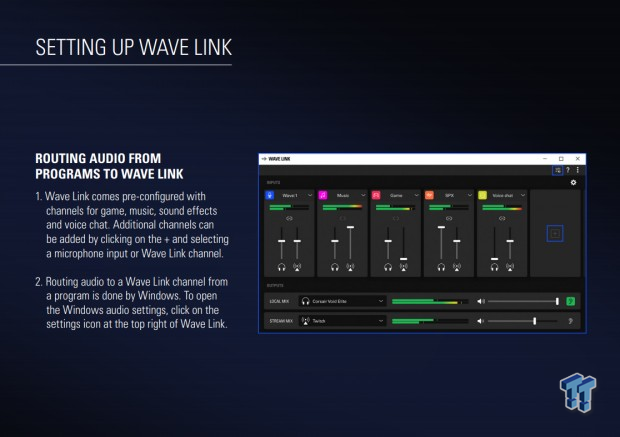
In this slide, we are looking at how to get audio from specific programs to route through channels. Examples for this include games, music, sound effects, and voice chat. Audio routing from programs isn't done through WAVE Link, but through Windows (see next slide).

Here we can see what WAVE Link looks like in the Windows output device tab. Clicking on the little icon in the top right-hand corner of the WAVE Link software will open the 'App volume and device preferences' tab in Windows. Here you can change specific programs to output their volume to specific channels. Looking at the slide, we can see that the user wants to output the game volume from Minecraft to the Game channel created in the WAVE Link app. Doing this will allow the user to control the volume of Minecraft independently of all the other sounds on the PC.
To do this, the user must find the game, or program they wish to route audio to and change the output source of that program to the corresponding channel in WAVE Link. For example, the user is changing the output source of Minecraft to WAVE Link Game, which corresponds to the Game channel in the WAVE Link software.

WAVE Link Stream Mix can be used with Open Broadcaster Software (OBS), and that can be simply done by opening up OBS, locating the sound settings tab, and then selecting Wave Link Stream as the Mix/Auxiliary device. To avoid any issues, set the sample rate to 48khz, and make sure it's the same in Windows as well.
Performance & Microphone
Performance
Now we are at what could be argued as the most important part of the review, the sound quality of the microphone. For this part of the review I decided to test the microphone directly against the Razer Seiren Emote, which is currently priced at $129.99 on Amazon, but is originally priced at $179.99 on the Razer website. Since the WAVE 3 is priced at $159.99, I thought it would be a good test to compare the quality of a microphone of around the same cost to the WAVE 3, but also throw in the WAVE 1 test results, and a gaming headset microphone test.
Razer Seiren Emote
Elgato WAVE 1
ASTRO A50
Elgato WAVE 3
After listening to each of those recordings, you can hear clear differences between the Razer Seiren Emote, both WAVE microphones, and the ASTO A50 microphone. For me, the Razer Seiren Emote sounded a lot more hollow, there wasn't that much detail to my voice, and my keystrokes were extremely loud and present. The WAVE 1 and the WAVE 3 almost sound identical in my opinion, but if you listen closely, there is a slight variation in detail, but not by much at all. I believe the WAVE 3 is superior to the Razer Seiren Emote, and the ASTRO A50's, which sound extremely compressed, but this is expected from a headset microphone that comes noise compression.
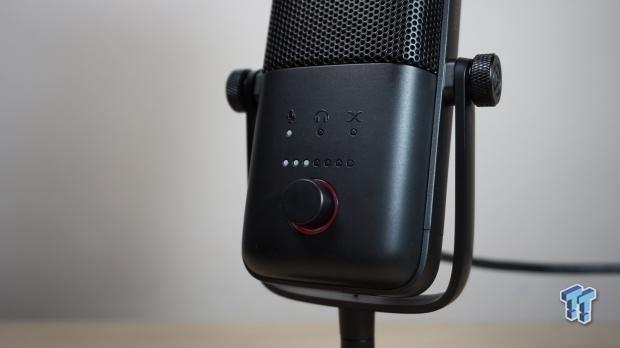
As for WAVE 3, Elgato has done a fantastic job at honing in on the users' voice, and minimizing any background noise that is coming from the environment, e.g keystrokes. It should be noted that each of these microphones was tested at complete stock settings. No adjustments were made as I wanted to test them as "plug-and-play". With that being said, I believe that the Razer Seiren Emote, ASTRO A50's, WAVE 1, and the WAVE 3 all can be improved via their respective settings. For WAVE 3 specifically, I recommend setting the gain of the microphone to 40%, and to keep the microphone 20cm away from your face. Doing this will reduce the microphone from picking up any breathing, while also keeping a consistent volume for your voice.
Final Thoughts
What's Hot
WAVE 3 has a slew of features that will no doubt be greatly appreciated by content creators and streamers. It is also very competitively priced at $159.99, as its features and quality outmatch even more expensive microphones on the market.
What's Not
There are honestly not that many downsides to the WAVE 3, but if I were to change anything would be having software that is slightly more stable and the dial on the microphone having smaller increase/decrease increments.
So, the ultimate question is the WAVE 3 worth the $159.99? Well, as with all products and prices, that answer really depends on the user.
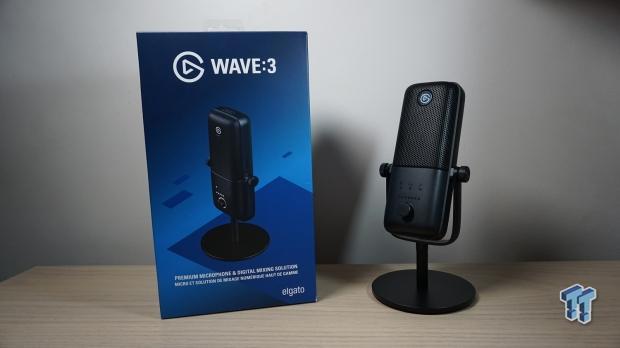
Put it this way, Elgato has entered the microphone market with a microphone that not only has incredible quality but also comes with software that is designed specifically for content creators and streamers. So, if you are a gamer that is looking to get into streaming or content creation, but doesn't want to cash out on an expensive audio setup (e.g., GoXLR), you now have a solution from Elgato.
I believe Elgato's goal behind both WAVE microphones was to make the world of streaming much more accessible to gamers. It seems that with almost every product launch from Elgato, that seems to be the underlying motif. If I'm correct with that assumption, I wholeheartedly believe that Elgato has more than achieved what they have set out to do with the WAVE microphones.
The world of live streaming and content creation is becoming cheaper and more accessible, and Elgato is the one at the helm of the ship, steering gamers towards a brighter and better future with each product release.
Fantastic work, Elgato.
Performance | 99% |
Quality | 98% |
Features | 98% |
Value | 96% |
Overall | 98% |
The Bottom Line
Elgato has changed the game when it comes to entry-level microphones for streamers and content creators. A high-end audio setup now might not be necessary with the WAVE 3 hitting the market.

Related Tags
![Intel shelves Raja Koduri, out of the GPU unit, back to Chief Architect position Intel shelves Raja Koduri, out of the GPU unit, back to Chief Architect position]() Intel shelves Raja Koduri, out of the GPU unit, back to Chief Architect position
Intel shelves Raja Koduri, out of the GPU unit, back to Chief Architect position![Atari hardware revenues down 91% as VCS console significantly underperforms Atari hardware revenues down 91% as VCS console significantly underperforms]() Atari hardware revenues down 91% as VCS console significantly underperforms
Atari hardware revenues down 91% as VCS console significantly underperforms![NVIDIA's purported next-gen TITAN RTX renders: quad-slot GPU, dual 16-pin power NVIDIA's purported next-gen TITAN RTX renders: quad-slot GPU, dual 16-pin power]() NVIDIA's purported next-gen TITAN RTX renders: quad-slot GPU, dual 16-pin power
NVIDIA's purported next-gen TITAN RTX renders: quad-slot GPU, dual 16-pin power![PlayStation's Jim Ryan isn't worried about Xbox Game Pass, but he should be PlayStation's Jim Ryan isn't worried about Xbox Game Pass, but he should be]() PlayStation's Jim Ryan isn't worried about Xbox Game Pass, but he should be
PlayStation's Jim Ryan isn't worried about Xbox Game Pass, but he should be![Final Fantasy 16 will flex the PlayStation 5's power, Yoshi-P says Final Fantasy 16 will flex the PlayStation 5's power, Yoshi-P says]() Final Fantasy 16 will flex the PlayStation 5's power, Yoshi-P says
Final Fantasy 16 will flex the PlayStation 5's power, Yoshi-P says
![TeamGroup T-Create Classic DL 1TB SSD Review - Stalwart DRAMless TeamGroup T-Create Classic DL 1TB SSD Review - Stalwart DRAMless]() TeamGroup T-Create Classic DL 1TB SSD Review - Stalwart DRAMless
TeamGroup T-Create Classic DL 1TB SSD Review - Stalwart DRAMless![Acer Predator GM7000 4TB SSD Review - 4TB of Elite Performance Acer Predator GM7000 4TB SSD Review - 4TB of Elite Performance]() Acer Predator GM7000 4TB SSD Review - 4TB of Elite Performance
Acer Predator GM7000 4TB SSD Review - 4TB of Elite Performance![Cooler Master XG850 Plus Platinum PSU Review Cooler Master XG850 Plus Platinum PSU Review]() Cooler Master XG850 Plus Platinum PSU Review
Cooler Master XG850 Plus Platinum PSU Review![SteelSeries Apex 9 Mini Gaming Keyboard Review SteelSeries Apex 9 Mini Gaming Keyboard Review]() SteelSeries Apex 9 Mini Gaming Keyboard Review
SteelSeries Apex 9 Mini Gaming Keyboard Review![PCCooler GAMEICE CPU Air Coolers (K4, K6, and G6) Review PCCooler GAMEICE CPU Air Coolers (K4, K6, and G6) Review]() PCCooler GAMEICE CPU Air Coolers (K4, K6, and G6) Review
PCCooler GAMEICE CPU Air Coolers (K4, K6, and G6) Review
![Silicon Motion SM2267XT DRAMless Laptop SSD Preview - Speed and Efficiency Silicon Motion SM2267XT DRAMless Laptop SSD Preview - Speed and Efficiency]() Silicon Motion SM2267XT DRAMless Laptop SSD Preview - Speed and Efficiency
Silicon Motion SM2267XT DRAMless Laptop SSD Preview - Speed and Efficiency![NVIDIA GeForce RTX 4080 Unboxed: FE, ASUS, MSI and ZOTAC NVIDIA GeForce RTX 4080 Unboxed: FE, ASUS, MSI and ZOTAC]() NVIDIA GeForce RTX 4080 Unboxed: FE, ASUS, MSI and ZOTAC
NVIDIA GeForce RTX 4080 Unboxed: FE, ASUS, MSI and ZOTAC![NVIDIA GeForce RTX 4090 OC Shootout: ASUS, COLORFUL, FE, MSI, GAINWARD NVIDIA GeForce RTX 4090 OC Shootout: ASUS, COLORFUL, FE, MSI, GAINWARD]() NVIDIA GeForce RTX 4090 OC Shootout: ASUS, COLORFUL, FE, MSI, GAINWARD
NVIDIA GeForce RTX 4090 OC Shootout: ASUS, COLORFUL, FE, MSI, GAINWARD![NVIDIA GeForce RTX 4090 Unboxed: FE, ASUS ROG Strix, MSI SUPRIM LIQUID NVIDIA GeForce RTX 4090 Unboxed: FE, ASUS ROG Strix, MSI SUPRIM LIQUID]() NVIDIA GeForce RTX 4090 Unboxed: FE, ASUS ROG Strix, MSI SUPRIM LIQUID
NVIDIA GeForce RTX 4090 Unboxed: FE, ASUS ROG Strix, MSI SUPRIM LIQUID![Storage Showdown - Intel Alder Lake vs. AMD Zen 4 Storage Showdown - Intel Alder Lake vs. AMD Zen 4]() Storage Showdown - Intel Alder Lake vs. AMD Zen 4
Storage Showdown - Intel Alder Lake vs. AMD Zen 4


